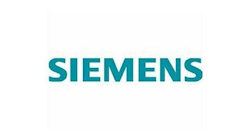U.S. Transportation Secretary Anthony Foxx wants the transit industry to embrace its role as pioneers of a new frontier in restoring opportunity to communities across the nation and close the opportunity gap.
“The widening gap threatens the core of the American dream — the idea that no matter where you come from, you can make it in America if you work hard and play by the rules,” Foxx said.
Foxx spoke Oct. 5, at the American Public Transportation Association (APTA) annual meeting in San Francisco, where he challenged the industry to meet the needs of a growing country, which not only has a widening opportunity gap, but tremendous pressure on infrastructure and a growing population.
“As America becomes more of a closely connected group of mega regions, the importance of APTA and the work that the members of APTA do every day to deliver high quality transportation to folks who really need it that work is going to become more important because increasingly we’re finding limitations to our ability to expand lane miles, hitting us hard in many of our urban areas and of course with the lack of a longer term highway bill, that also presents a limitation,” he said.
The lack of a long-term funding bill remains a challenge for the transportation industry as a whole, Foxx said, but work between the U.S. Department of Transportation (DOT) and local communities is working to change communities and rehabilitate neighborhoods long ago carved up by structural discrimination policies.
“They even gave these walls names,” he said. “The Mason-Dixon Lines, or the Staten Island Expressway or the Berlin Wall of Syracuse just to name a couple and the reality is the messages are still there.
“The walls, if you will, are still up.”
The walls created by infrastructure isolated areas of cities and removed homes and communities and separated residents from opportunity. And when a transportation bill comes due, transportation leaders have an opportunity to be the most transformative in U.S. history. The federal government will work with Smart Growth America in addressing issues across the nation and use programs like funding transit-oriented development to reinvest in economically depressed communities.
“Imagine bridges and overpasses that are more than just north-south thruways,” Foxx said. “Imagine unleashing the ingenuity of our nation’s land use planners and engineers, the decision makers to make those facilities more inviting and approachable and maybe even complimentary to the surroundings on the east and west sides of them.”
Foxx said he lived the reality of a community divided by infrastructure with a childhood home two blocks from I-85 and I-77, and no one would have guessed he become transportation secretary.
Transportation is a pillar of opportunity like education and health care, Foxx said, but too often it’s left out of the conversation in closing the gap. Foxx said when he speaks of the next frontier, it’s about the role transportation can play in closing opportunity gaps in the nation.
“(I)f opportunity were an iPad, transportation would be the operating system. It doesn’t hire your but it makes getting to work possible,” he said. “It doesn’t treat an illness, but it makes getting health care possible. It doesn’t teach, but it makes learning possible, it’s not a house but try getting to yours without it.”
Addressing connectivity means embracing new technology, Foxx said, when it can create higher levels of safety and innovation.
“Frankly, the infrastructures deficit is so great, that if technology can help us close that deficit it’s in our national interest to enable that to happen,” he said.
Foxx took questions from the audience after his remarks, where he stressed the importance of technology in helping mobility for disabled riders and work DOT has done to help local agencies find funding for projects.
He was asked about changes in Buy America compliance, but Foxx said the administration embraces the rules and lots of success is being seen with its implementation along with room for more.
Foxx was asked about the federal government’s role in addressing workforce needs for transportation and he said while mayor of Charlotte, Siemens got a grant to expand its facilities where it builds gas turbines and the government pulled in the local community colleges and the company to address workforce needs. When they worked together, Foxx said they came up with a solution where Siemens underwrote the training program.
“I think the most successful models are ones where it’s not just the department of labor and USDOT working together, we’re doing that in conjunction with community colleges, our vocational schools and also the private sector,” he said.
Foxx was also asked what it will take to get America excited about high-speed rail and he said projects like the California high-speed rail system, the proposed Houston to Dallas system and the Florida system are all very important aspects to getting residents on board.
“I see this over and over again in transportation and in fact, in our history as country, we have a pattern of very strong rooting against major transformative projects until they’re on the ground, then it changes public perception,” he said.
Don Orseno, executive director and CEO of Metra, asked about the looming PTC deadline facing rail industry and what the DOT will do given so many railroads will not meet the deadline. Foxx did acknowledge the ongoing conversations about meeting the deadline for passenger, commuter and freight railroads are a concern, but it’s a mandate that’s written into law to meet the deadline, so the agency has a role to enforce the law.
“Think, at some point we need folks to comply with PTC and whether that’s now or whether that’s a year from now, two years from now or whatever, I think the question is, what’s going to be different,” he said. “And hopefully as this conversation continues on the hill, that will get weeded out of the conversation and can continue to make progress.”

Joe Petrie | Associate Editor
I came to Mass Transit in 2013 after spending seven years on the daily newsbeat in southeastern Wisconsin.
Based in Milwaukee, I worked as a daily newspaper reporter with the Waukesha Freeman from 2006-2011, where I covered education, county and state government. I went on to cover courts for Patch.com, where I was the main courts reporter in the Metro Milwaukee cluster of websites.
I’ve won multiple awards during the course of my career and have covered some of the biggest political events in the past decade and have appeared on national programs.
Having covered local government and social issues, I discovered the importance of transit and the impact it can have on communities when implemented, supported and funded.




